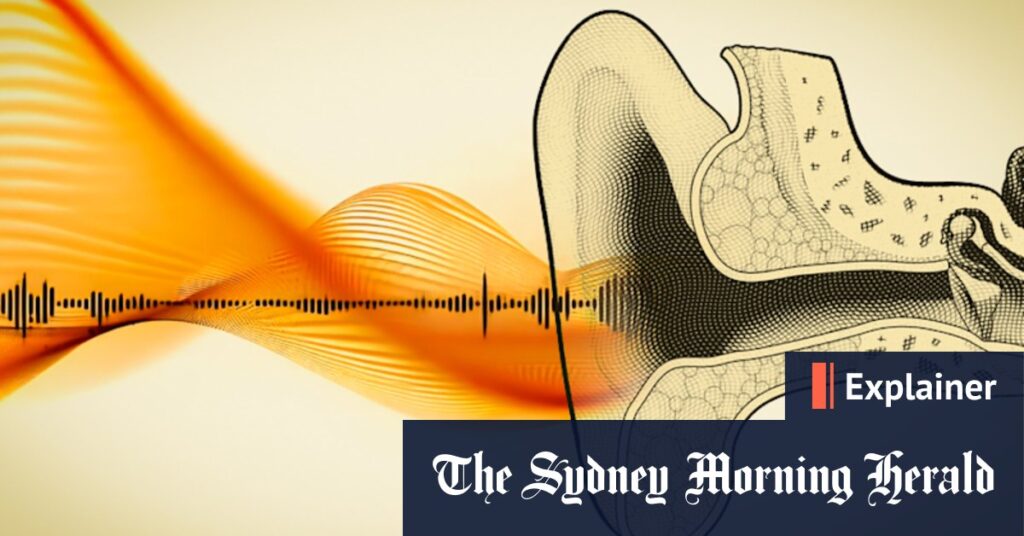
Loud noise followed Daryl Holmes everywhere. Whether it was the blaring car radio or the roaring TV at home, his life was a cacophony of sound. Despite his wife’s repeated attempts to communicate, he often responded with, “What did you say?” This was not surprising given his history of working in noisy environments like steel mills and mines without ear protection. By the time he reached 73, Daryl had been living with undiagnosed hearing loss for years.
Hearing loss is a widespread issue, affecting at least one in six Australians. The problem becomes more pronounced with age, with half of the population over 70 experiencing difficulties. The impact is profound, affecting social interactions and overall quality of life. According to Barbra Timmer, president of Audiology Australia, “Hearing loss has a strong knock-on effect on many aspects of wellbeing.”
The Mechanics of Hearing
Sound is a fascinating phenomenon that requires a medium like air to travel. Humans can perceive sound frequencies ranging from 20 to 20,000 hertz, with our most sensitive range being between 2000 and 5000 hertz. The outer ear, or pinna, collects sound vibrations and funnels them into the ear canal, where they are further processed.
Inside the ear, the middle ear’s role is to transmit these sound waves from the air to the denser fluid of the inner ear. This process involves the eardrum and the three smallest bones in the body, which amplify the vibrations. The cochlea, a spiral-shaped cavity, then converts these vibrations into signals for the brain through a complex system involving thousands of microscopic hair cells.
“Each ear has about 12,000 outer hair cells and 3000 inner hair cells … Those little hair cells become Grand Central Station for hearing.” – Wayne Wilson, Associate Professor of Audiology at the University of Queensland
Why Hearing Deteriorates with Age
Presbycusis, or age-related hearing loss, is a common condition affecting about one in three people over 60. The causes are multifaceted, including genetic factors, noise exposure, diet, and certain medications. Unfortunately, unlike some animals, humans cannot regenerate damaged hair cells in the cochlea.
As Wayne Wilson describes, the degeneration of hair cells is akin to a cyclone’s aftermath, with cells appearing smashed and bent. This damage primarily affects high-frequency sounds, making it difficult for older adults to hear higher-pitched voices or distinguish certain words clearly.
Impact on Daily Life
The consequences of hearing loss extend beyond the inability to hear. Daryl Holmes, for instance, found himself exhausted from the effort of trying to listen. This fatigue is a common experience, as the brain reallocates cognitive resources to compensate for the hearing deficit. Social isolation and reduced cognitive stimulation are other potential outcomes, which can further impact mental health.
“There’s a 47% greater likelihood of depression among those with hearing loss.” – Australian review of studies
Health Implications and Future Outlook
Research indicates a potential link between hearing loss and dementia, suggesting that addressing hearing loss could reduce dementia risk by 40%. While the exact relationship is not fully understood, the association highlights the broader health implications of untreated hearing issues.
Michael Bruce, a vascular surgeon, experienced a decline in his social interactions due to hearing difficulties. Determined not to let it affect his life, he sought help and regained his ability to engage with others. This underscores the importance of addressing hearing loss proactively.
As we continue to explore the connections between hearing and overall health, the need for awareness and early intervention becomes increasingly clear. Hearing aids and other assistive technologies offer a lifeline, helping individuals like Daryl and Michael maintain their quality of life.
In conclusion, understanding the mechanics and impact of hearing loss is crucial for addressing this common issue. With ongoing research and advancements in treatment, there is hope for those affected to regain their auditory capabilities and improve their overall wellbeing.







